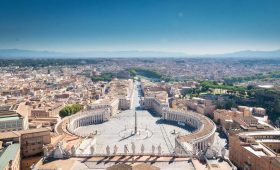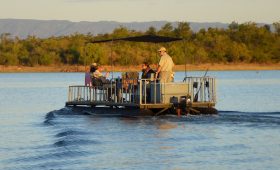Exploring Outamba-Kilimi National Park
Outamba-Kilimi National Park, located in northwestern Sierra Leone, offers a unique opportunity to experience the country’s rich biodiversity and vibrant ecosystems. Established as a game reserve in 1974 and designated a national park in 1995, it is a haven for wildlife enthusiasts and those seeking an authentic wilderness experience.
Getting There
Reaching Outamba-Kilimi National Park requires some planning. The park is accessible from Freetown, the capital of Sierra Leone. Travelers typically fly into Lungi International Airport. From there, the journey continues by road, as there are no domestic flights directly to the park. Hiring a local guide or arranging transportation from Freetown is advisable, as the roads can be challenging.
Best Time to Visit
The ideal time to visit is during the dry season, from November to April. During these months, the weather is more predictable, and the park’s trails are easier to navigate. The wet season, from May to October, brings heavy rains, which can make travel difficult. However, birdwatchers may find the wet season rewarding, as the park’s birdlife is particularly active.
Wildlife and Biodiversity
Outamba-Kilimi National Park is renowned for its diverse wildlife. It is home to over 100 bird species, earning it the designation of an Important Bird Area by BirdLife International. Birdwatchers can spot everything from colorful parrots to majestic eagles.
The park also hosts a variety of mammals, including western chimpanzees, colobus monkeys, and sooty mangabeys. Visitors might also encounter forest elephants, common warthogs, and the rare bongo antelope. The park’s rivers are home to hippos and the elusive pygmy hippos.
Reptile enthusiasts will find a range of species, including snakes, lizards, and turtles. The West African dwarf crocodile is a rare sight but can be found in certain areas of the park.
Activities in the Park
Guided Nature Walks
Guided nature walks are a great way to explore the park’s diverse ecosystems. Trained guides lead visitors through trails that wind through tall-grass savanna, woodland, and patches of closed-canopy forest. The terrain is largely undeveloped, offering an authentic wilderness experience.
Boat Safaris
Boat safaris along the Outamba River provide a different perspective on the park’s wildlife. These peaceful excursions allow visitors to observe sunbathing crocodiles and playful hippos along the riverbanks.
Camping
For those seeking an immersive experience, camping in the park is an option. Simple huts made from local materials are available, providing a rustic but comfortable stay. Falling asleep to the sounds of the wilderness is a memorable experience.
Local Culture and Community
The Susu tribe, or Soso, live in and around the park. Most park personnel are Susu, and their villages are located in the buffer zone surrounding the park. Visitors can engage with the local communities to learn about their traditions and way of life. Sustainable practices are encouraged, and hunting is restricted to protect the park’s wildlife.
While visiting, take the opportunity to explore nearby villages, where you can experience vibrant markets and traditional ceremonies. The National Tourism Board is working to increase tourism to support these communities, which have historically relied on the park’s resources.




